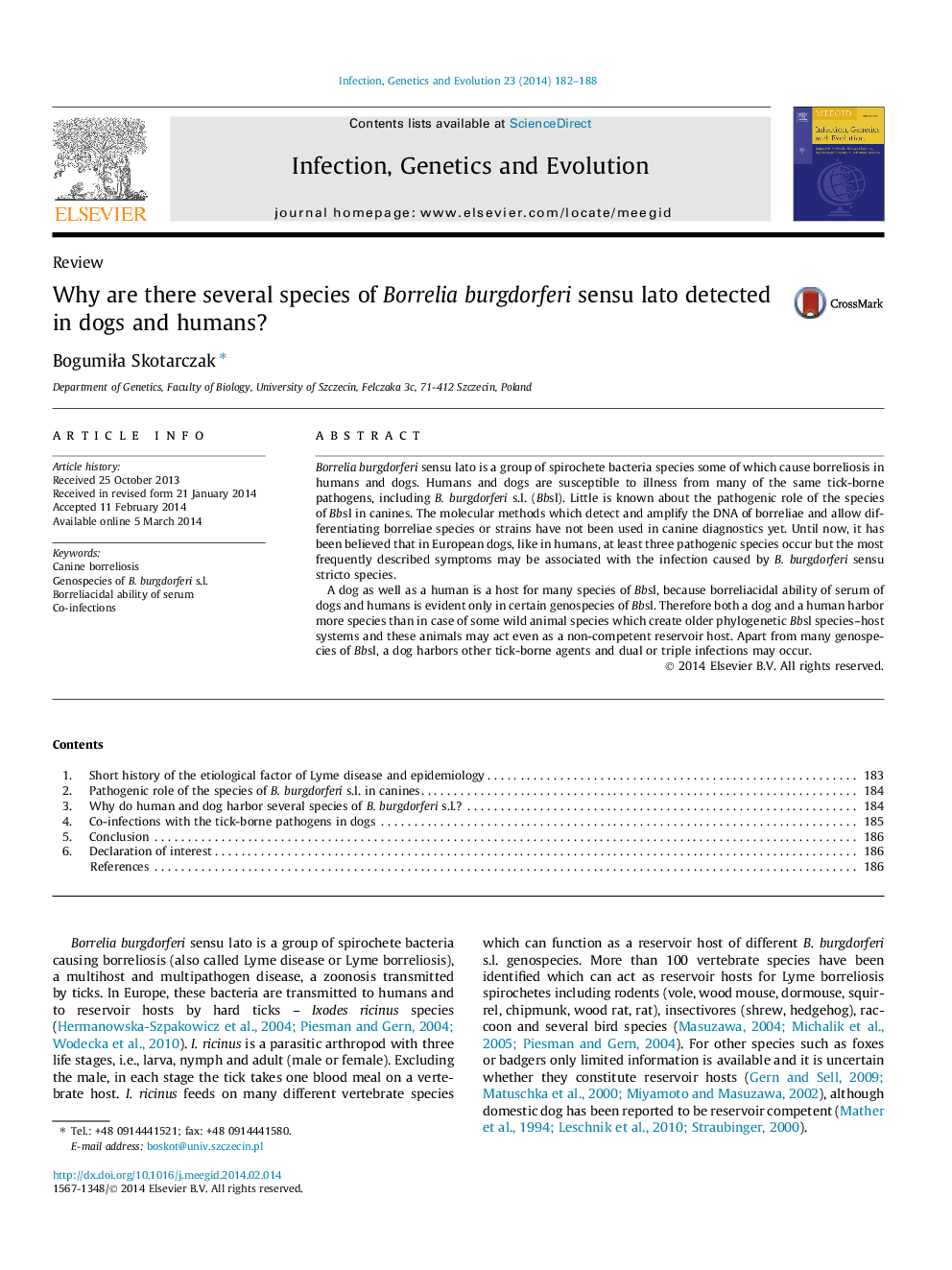| Article ID | Journal | Published Year | Pages | File Type |
|---|---|---|---|---|
| 5909881 | Infection, Genetics and Evolution | 2014 | 7 Pages |
â¢Humans and dogs harbor more species of B. burgdorferi s.l. than other animals.â¢Borrelia burgdorferi s.l. as young phylogenetic system.â¢Humans and dogs have not acquired ability to destroy most of the Borrelia genospecies yet.â¢Co-infections with the tick-borne pathogens in dogs.
Borrelia burgdorferi sensu lato is a group of spirochete bacteria species some of which cause borreliosis in humans and dogs. Humans and dogs are susceptible to illness from many of the same tick-borne pathogens, including B. burgdorferi s.l. (Bbsl). Little is known about the pathogenic role of the species of Bbsl in canines. The molecular methods which detect and amplify the DNA of borreliae and allow differentiating borreliae species or strains have not been used in canine diagnostics yet. Until now, it has been believed that in European dogs, like in humans, at least three pathogenic species occur but the most frequently described symptoms may be associated with the infection caused by B. burgdorferi sensu stricto species.A dog as well as a human is a host for many species of Bbsl, because borreliacidal ability of serum of dogs and humans is evident only in certain genospecies of Bbsl. Therefore both a dog and a human harbor more species than in case of some wild animal species which create older phylogenetic Bbsl species-host systems and these animals may act even as a non-competent reservoir host. Apart from many genospecies of Bbsl, a dog harbors other tick-borne agents and dual or triple infections may occur.
